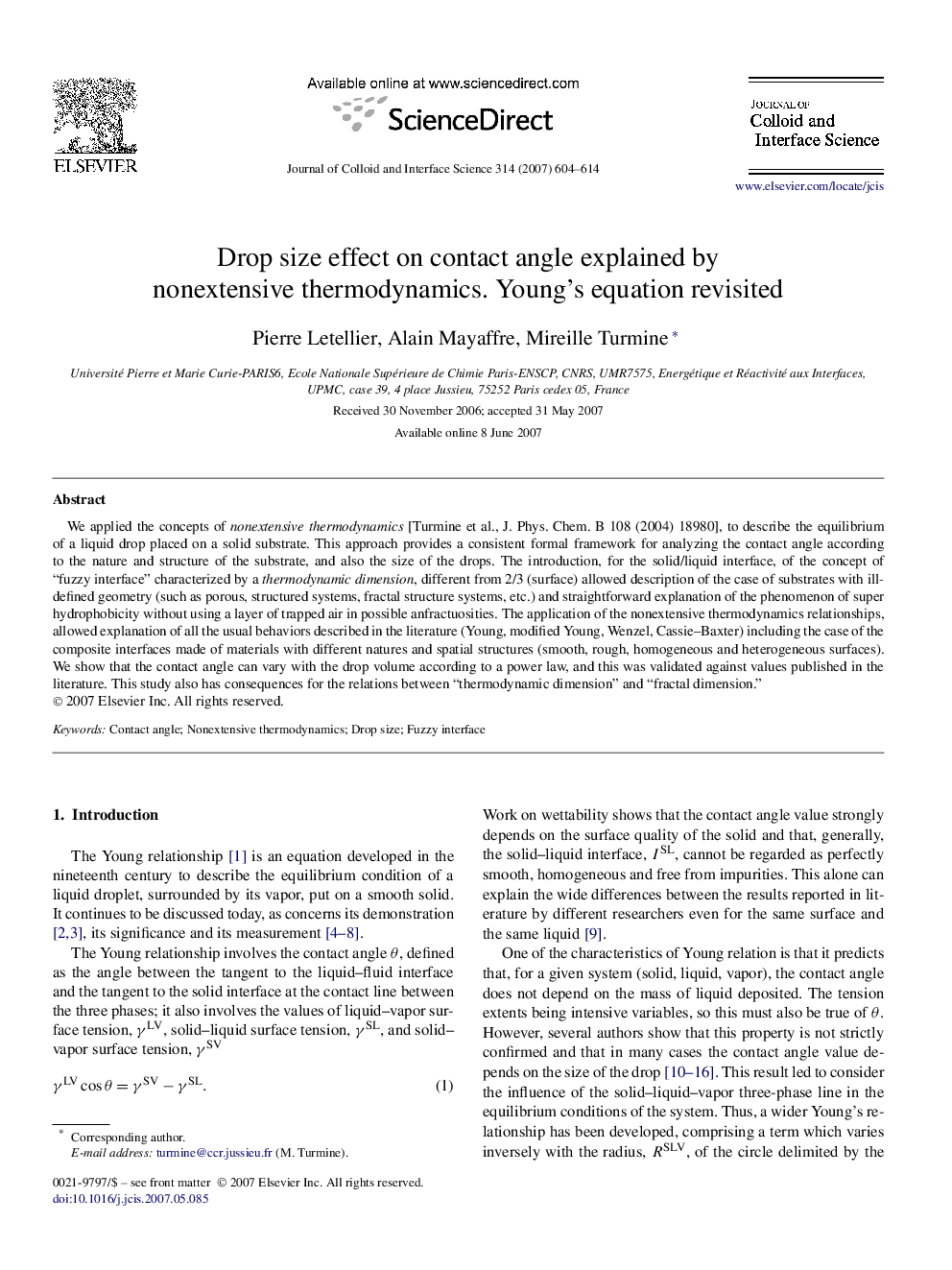| Article ID | Journal | Published Year | Pages | File Type |
|---|---|---|---|---|
| 612130 | Journal of Colloid and Interface Science | 2007 | 11 Pages |
We applied the concepts of nonextensive thermodynamics [Turmine et al., J. Phys. Chem. B 108 (2004) 18980], to describe the equilibrium of a liquid drop placed on a solid substrate. This approach provides a consistent formal framework for analyzing the contact angle according to the nature and structure of the substrate, and also the size of the drops. The introduction, for the solid/liquid interface, of the concept of “fuzzy interface” characterized by a thermodynamic dimension, different from 2/3 (surface) allowed description of the case of substrates with ill-defined geometry (such as porous, structured systems, fractal structure systems, etc.) and straightforward explanation of the phenomenon of super hydrophobicity without using a layer of trapped air in possible anfractuosities. The application of the nonextensive thermodynamics relationships, allowed explanation of all the usual behaviors described in the literature (Young, modified Young, Wenzel, Cassie–Baxter) including the case of the composite interfaces made of materials with different natures and spatial structures (smooth, rough, homogeneous and heterogeneous surfaces). We show that the contact angle can vary with the drop volume according to a power law, and this was validated against values published in the literature. This study also has consequences for the relations between “thermodynamic dimension” and “fractal dimension.”
Graphical abstractConcepts of nonextensive thermodynamics are applied to describe the sessile drop equilibrium. The solid–liquid interface is considered as a nonextensive phase characterized by an extensity χSLχSL and a thermodynamic dimension m.Figure optionsDownload full-size imageDownload as PowerPoint slide
